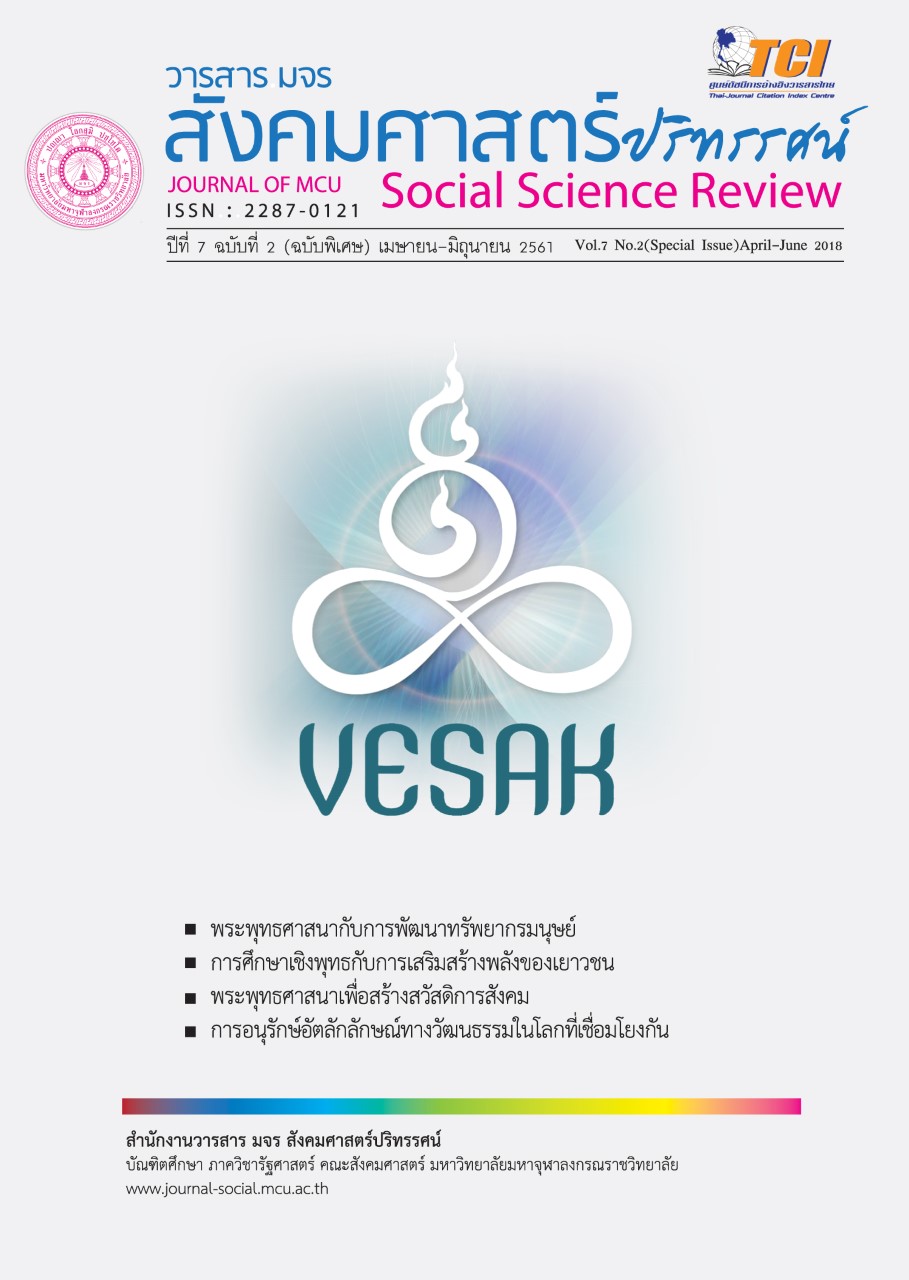คุณภาพชีวิตกับเซน
คำสำคัญ:
คุณภาพชีวิต,เซนบทคัดย่อ
This academic article wish to present the way refer to rapid of the world change that be from the progress of information technology and the stress causes ill health which dropped the quality of life in the present. It is an uncomfortable mindset for use the calm between the fast movement in nowadays that believe a high stress, constant anxiety over tasks and work and life, social anxiety are all a part of the modern way of life. Most people just don’t feel a sense of peace, of calm, of serenity, throughout their day. The way some of the time which learned a few things that have helped people create a feeling of calmness much more of the time than ever before. Our lives are filled with all kinds of noise , visual clutter, notifications, social media, news, all the things we need to read. And truthfully, none of it is necessary. Reduce all these things and more, and create some space, some quiet, in human life. Thus Zen meditation practice reminds the person to stay focused. The society is filled with constant distractions and often willfully give in to them. Zen drive the person to focus on the moment and be absorbed by the task at hand and do it well. The person characteristic will become to be habits that are not a one-time change in surroundings or work pattern. The Changing in environment is great, but can’t control the things that happen to them much of the time, and the person certainly can’t control how other people act. The only thing the person can control is their response and this response matters which can respond to the same event with anxiety or anger, or the person can respond with peace and calmness.
เอกสารอ้างอิง
Andy Ferguson, Zen's Chinese Heritage, Boston, MA: Wisdom Publications,2000.
David L. McMahan, The Making of Buddhist Modernism. Oxford University Press.,2008.
David W. Chappell, Hermeneutical Phases in Chinese Buddhism. In: Donald S,1993.
Heinrich Dumoulin, Zen Buddhism: A History. Volume 1: India and China, World Wisdom Books,2005.
John Snelling, The Buddhist handbook. A Complete Guide to Buddhist Teaching and Practice, London: Century Paperbacks,1987.
Jr Lopez, Buddhist Hermeneutics, Delhi: Motilal Banarsidass, 1993.
Katsuhiro Yoshizawa,The Religious Art of Zen Master Hakuin, Counterpoint Press,2009.
Katuski Sekida, Two Zen Classics. Mumonkan, the gateless gate. Hekiganroku, the blue cliff record, New York & Tokyo: Weatherhill,1996.
Peter Harvey , An introduction to Buddhism. Teachings, history and practices, Cambridge University Press,1995.
Robert Aitken, Foreword to "A Buddhist Bible , Boston, Massachusetts: Beacon Press,1994.
Shunryu Suzuki, Branching streams flow in the darkness: Zen talks on the Sandokai, University of California Press ,1997.
Sompran Promtha. Kuanphachamphon. Bangkok , Chatuchak , 1982.
Thomas P. Kasulis, Ch'an Spirituality. In: Buddhist Spirituality. Later China, Korea, Japan and the Modern World; edited by Takeuchi Yoshinori, Delhi: Motilal Banarsidass ,2003.
Thomas P. Kasulis, Ch'an Spirituality. In: Buddhist Spirituality. Later China, Korea, Japan and the Modern World; edited by Takeuchi Yoshinori, Delhi: Motilal Banarsidass.2003.
Warrior Monks of Shaolin ,Peace & Clarity, Body & Spirit Retreats to bring balance your life, LeadPages® Official Site .
ดาวน์โหลด
เผยแพร่แล้ว
รูปแบบการอ้างอิง
ฉบับ
ประเภทบทความ
สัญญาอนุญาต
ลิขสิทธิ์ (c) 2020 วารสาร มจร สังคมศาสตร์ปริทรรศน์

อนุญาตภายใต้เงื่อนไข Creative Commons Attribution-NonCommercial-NoDerivatives 4.0 International License.
เพื่อให้เป็นไปตามกฎหมายลิขสิทธิ์ ผู้นิพนธ์ทุกท่านต้องลงลายมือชื่อในแบบฟอร์มใบมอบลิขสิทธิ์บทความให้แก่วารสารฯ พร้อมกับบทความต้นฉบับที่ได้แก้ไขครั้งสุดท้าย นอกจากนี้ ผู้นิพนธ์ทุกท่านต้องยืนยันว่าบทความต้นฉบับที่ส่งมาตีพิมพ์นั้น ได้ส่งมาตีพิมพ์เฉพาะในวารสาร มจร สังคมศาสตร์ปริทรรศน์ เพียงแห่งเดียวเท่านั้น หากมีการใช้ภาพหรือตารางหรือเนื้อหาอื่นๆ ของผู้นิพนธ์อื่นที่ปรากฏในสิ่งตีพิมพ์อื่นมาแล้ว ผู้นิพนธ์ต้องขออนุญาตเจ้าของลิขสิทธิ์ก่อน พร้อมทั้งแสดงหนังสือที่ได้รับการยินยอมต่อบรรณาธิการ ก่อนที่บทความจะได้รับการตีพิมพ์ หากไม่เป็นไปตามข้อกำหนดเบื้องต้น ทางวารสารจะถอดบทความของท่านออกโดยไม่มีข้อยกเว้นใดๆ ทั้งสิ้น





